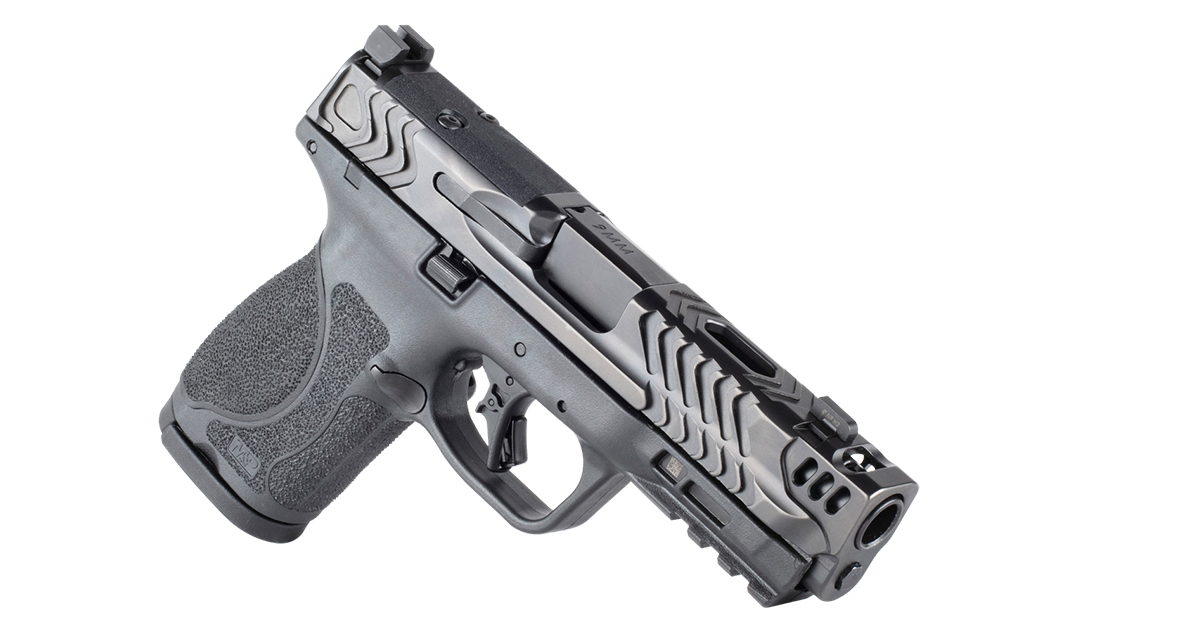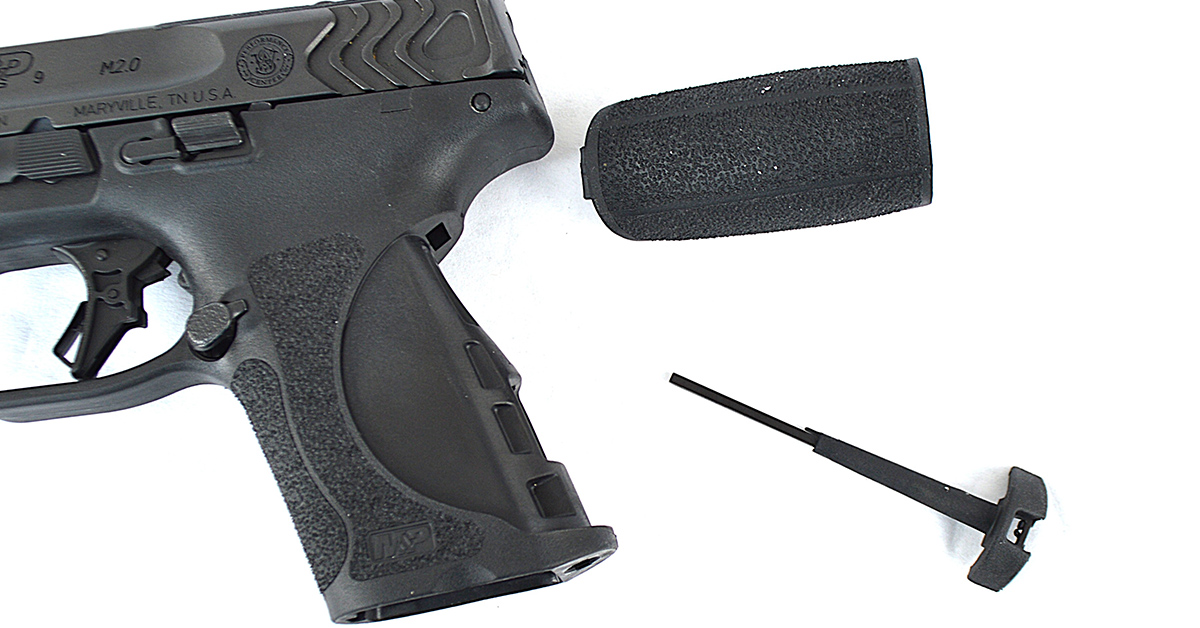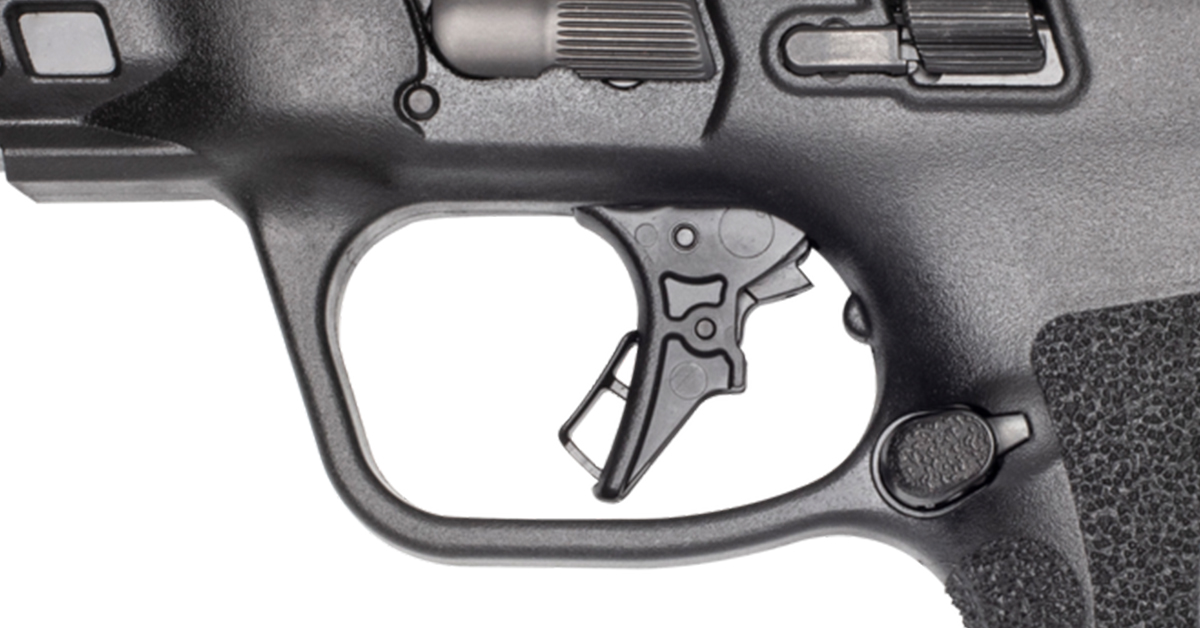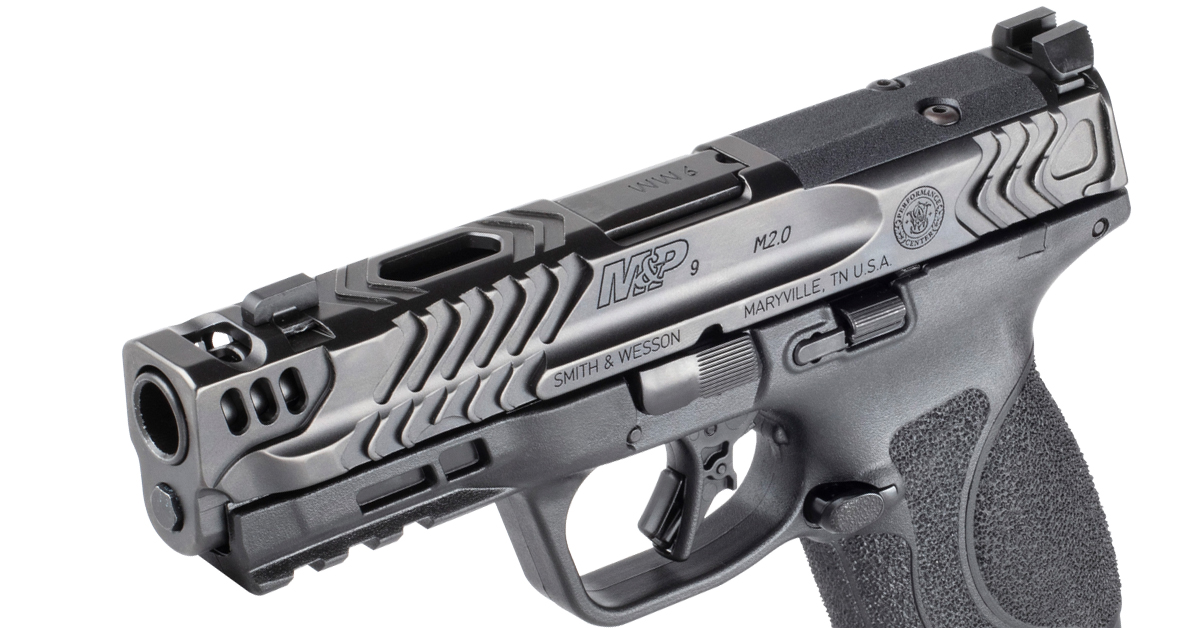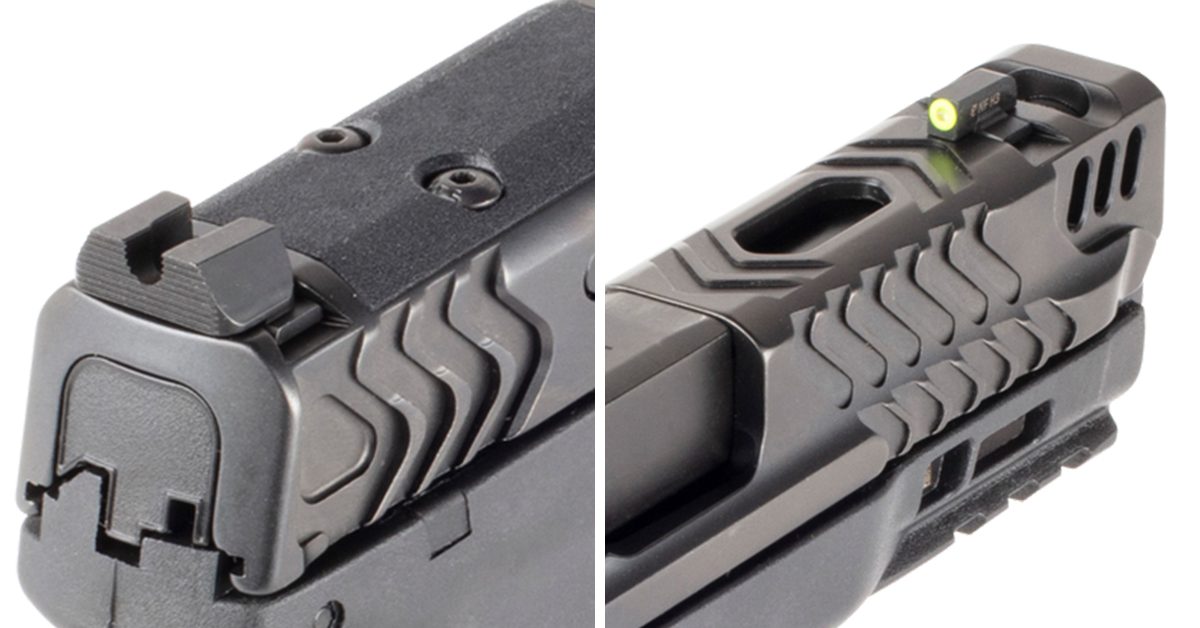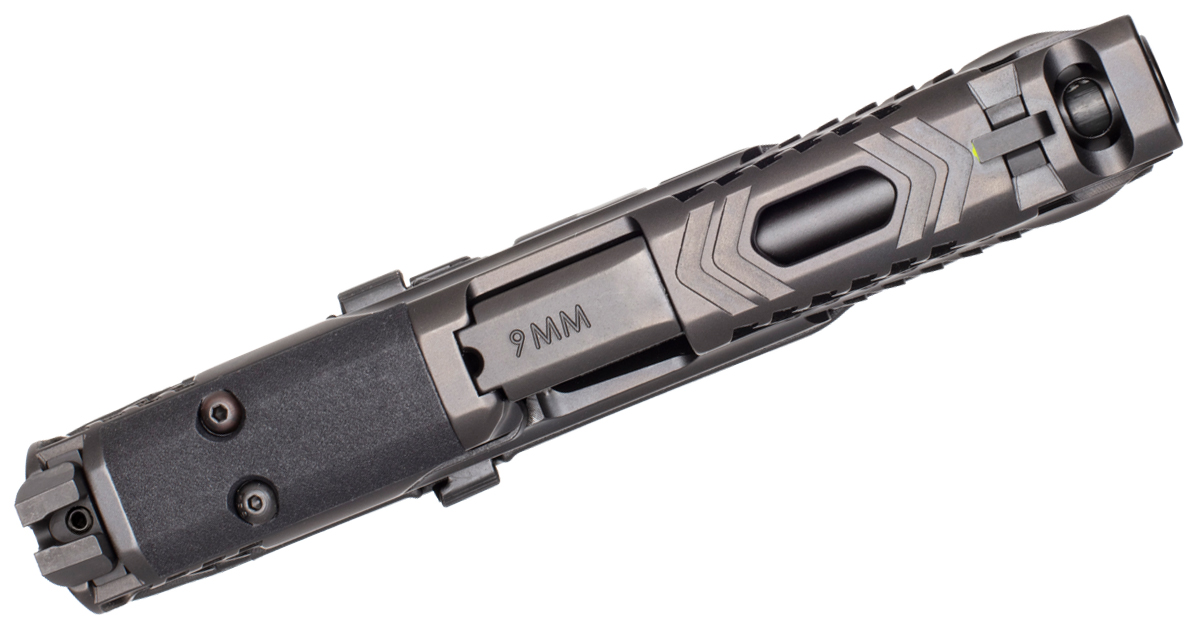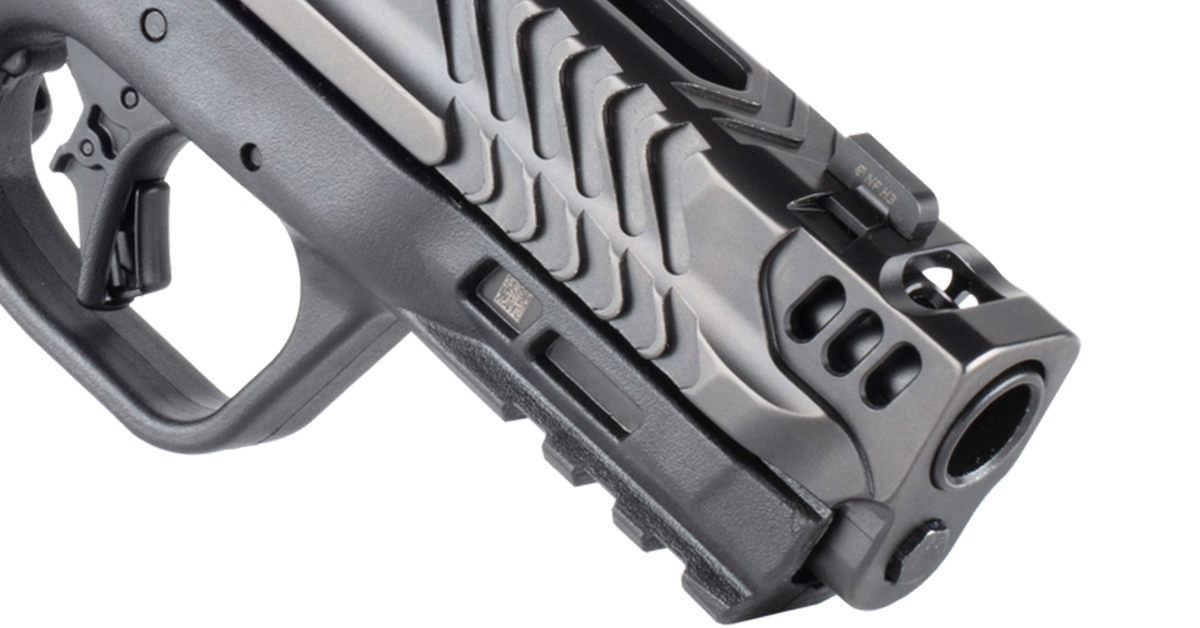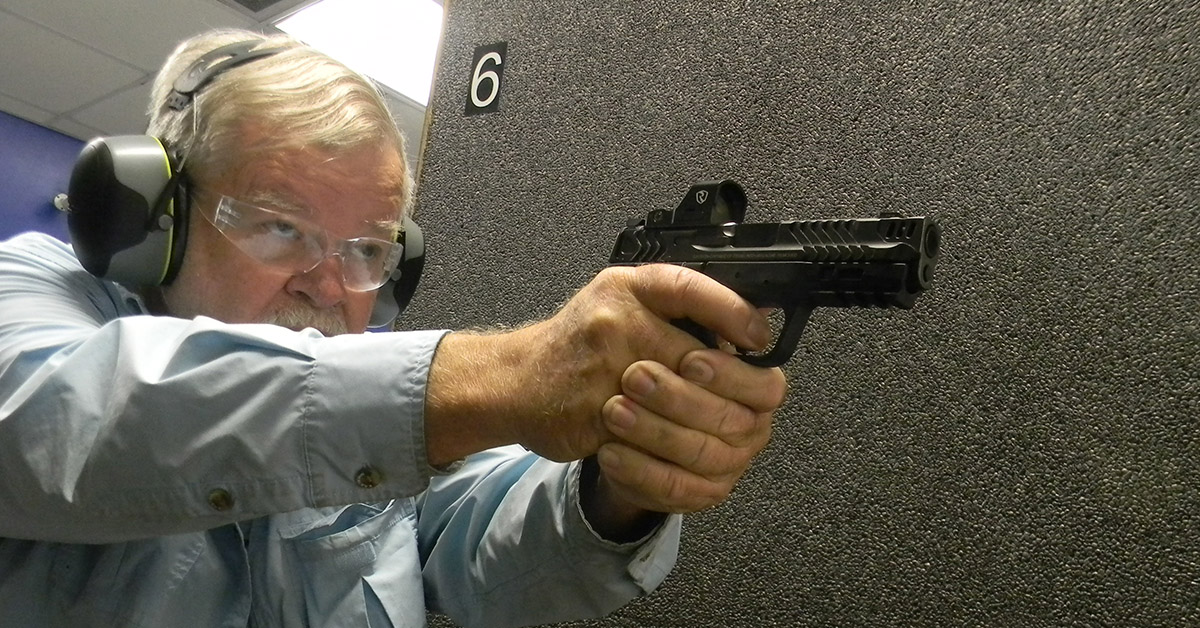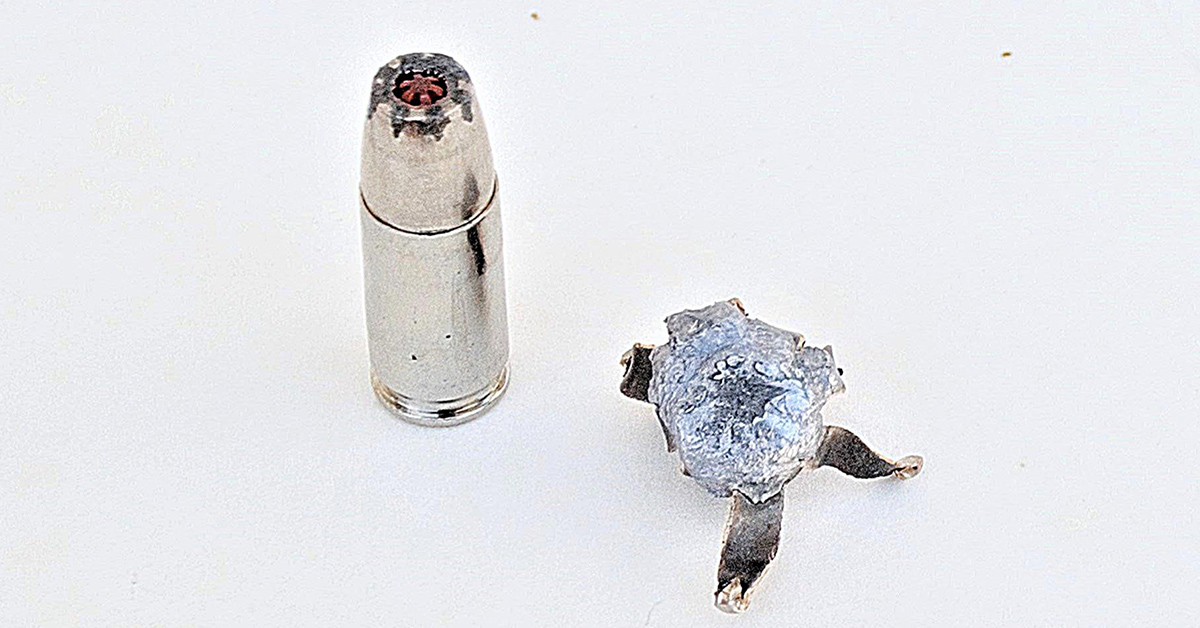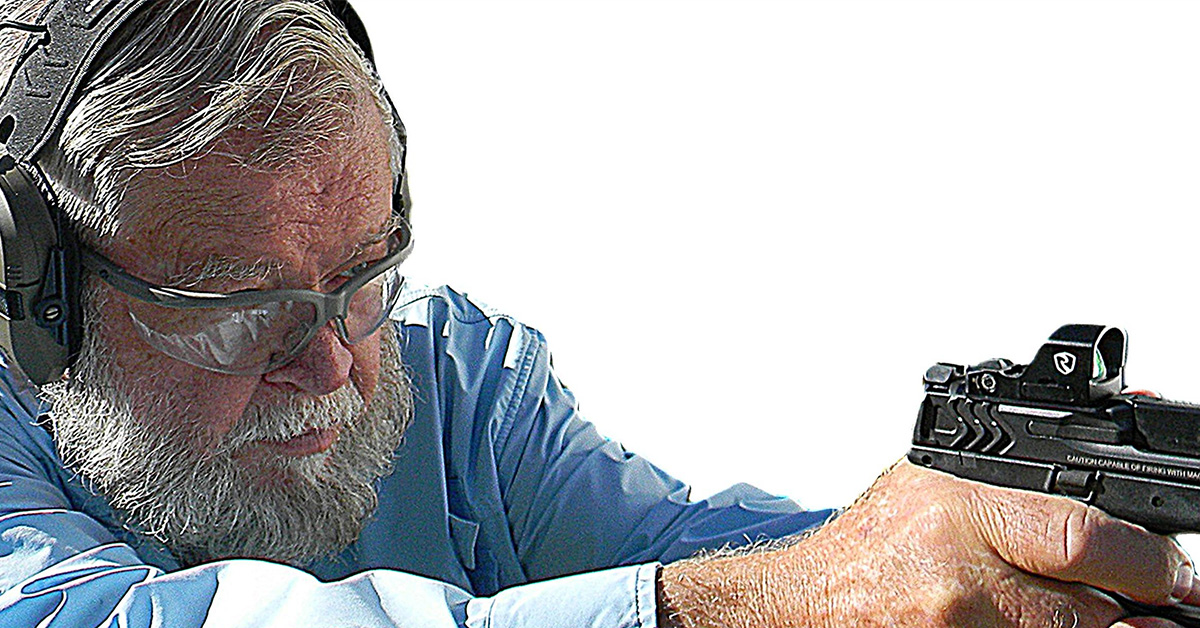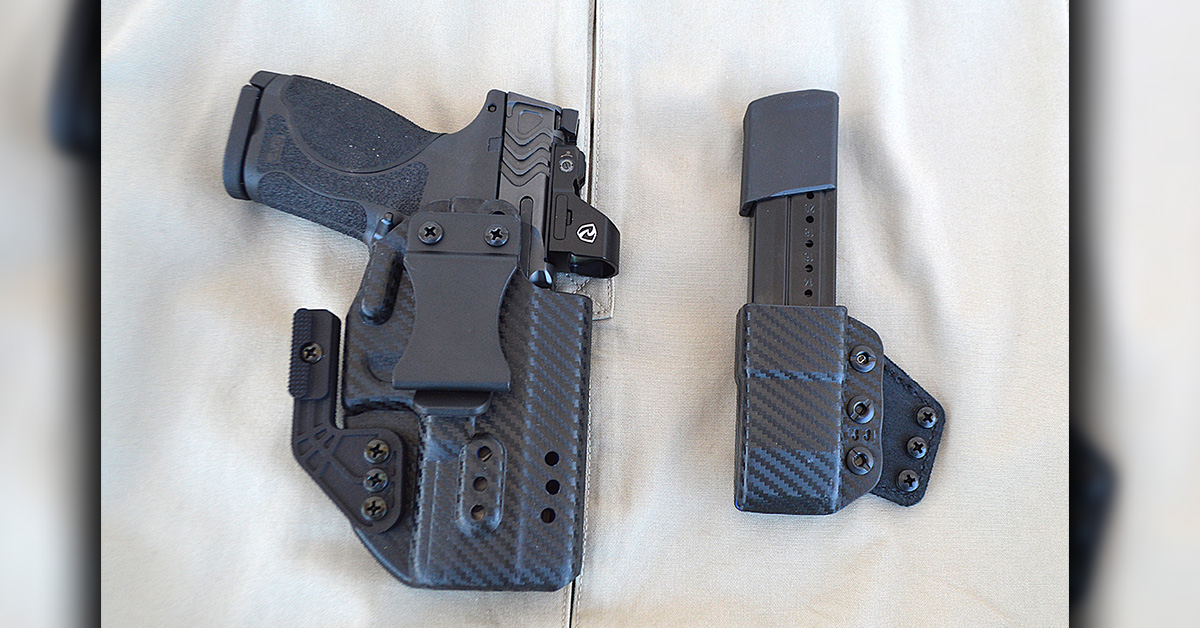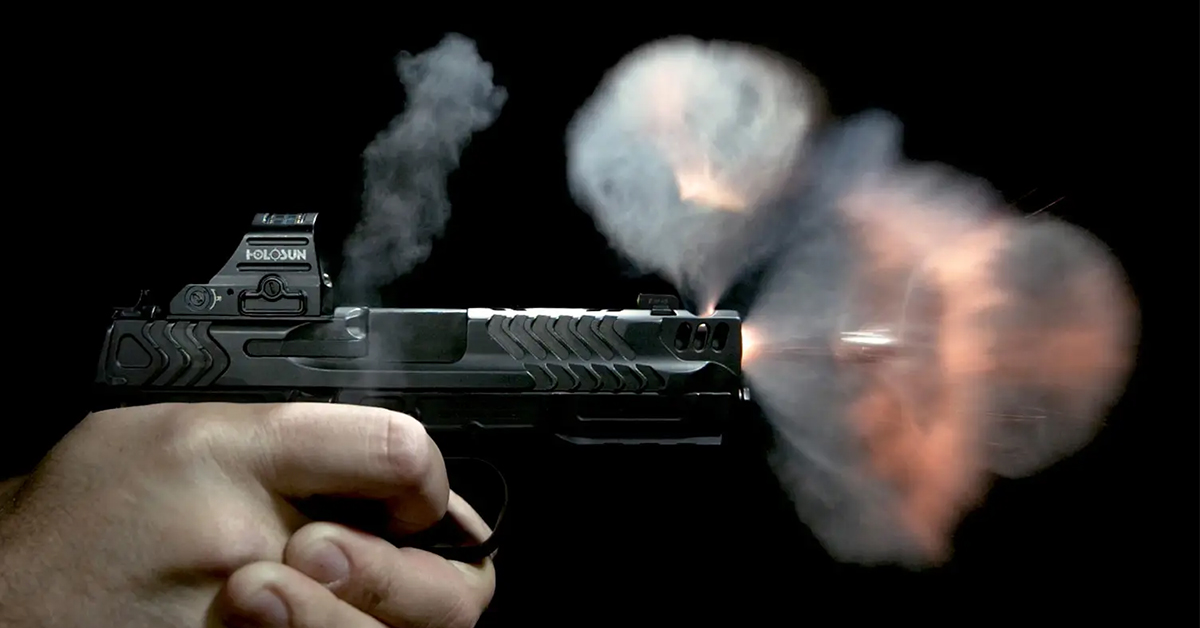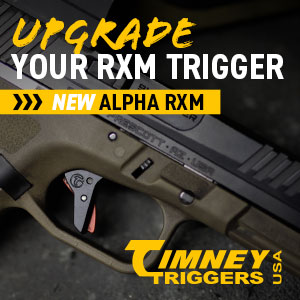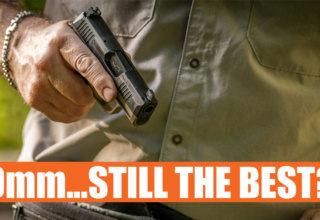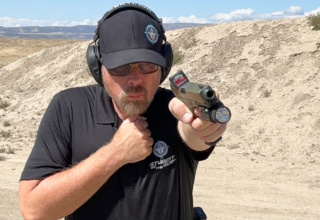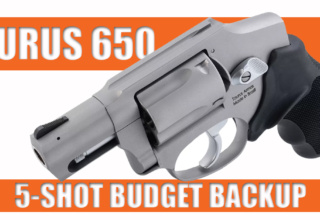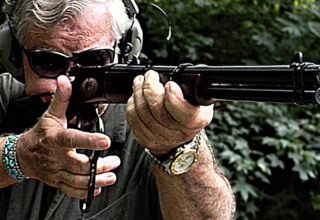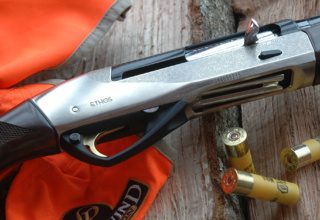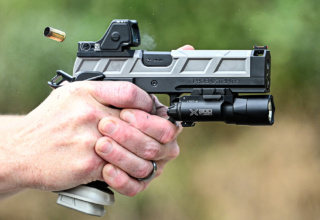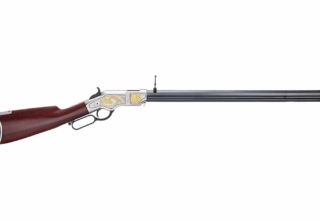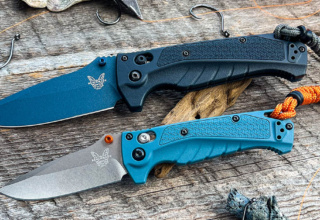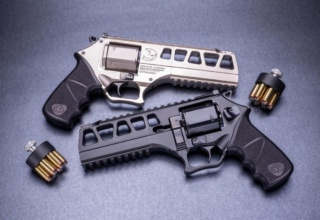As striker-fired pistols go, the S&W Performance Center M&P9 M2.0 Carry Comp is a solid choice if you value accuracy, ergonomics, and rock-solid reliability in a defensive arm
by Bob Campbell
Smith & Wesson is among our most iconic firearms makers, dating back to 1854. The company’s Military & Police lineup is arguably the bread and butter of Smith & Wesson, offering service-grade handguns that perform admirably in defensive roles. Some even have a role in competition. For those who wish their S&W to be all that it can be, there is the Performance Center gun option.
Performance Center handguns feature practical upgrades such as enhanced grip treatment, superior cocking serrations, night sights, and other upgrades. The pistol illustrated, the Smith & Wesson M&P9 M2.0 Compact Carry Comp, is a good example of what is termed gain of function — improving something that already exists in a meaningful way.
In one of my favorite vintage skits, James Cagney tells Bob Hope he did a dance number first, but Hope replies, “I did it right.” S&W was not the first with polymer frame guns and arguably had a misstep or two along the way.
The modern Military & Police pistol is a great handgun that is reliable, ergonomic, and accurate. The Military & Police offers many good features yet the primary advantage over every other polymer frame pistol is hand fit. The grip, as issued, fits most hands well. The balance of adhesion and abrasion in the 2.0 grip frame is ideal. Moreover, Smith & Wesson offers interchangeable grip straps. These straps are not simply back straps but true grip straps extending well into the palm swell.
The grips are changed by removing the magazine and accessing a neat and handy tool. Rotate the tool 90 degrees and the grip strap is easily removed. Insert the desired grip panel and replace the tool to lock the grip insert in place. The result is a pistol that may be customized significantly to fit more hand sizes.
The gun features an 18-degree grip angle and a somewhat high hand hold relative to the bore center line. Speed and accuracy come together well when the hand fits the pistol as well as the average hand fits the Military & Police handgun. The Carry Comp features the compact-type grip with a fifteen-round magazine capacity. Two steel magazines are included.
The frame comes with a rail for accepting combat lights and lasers. The pistol includes a well-designed, ambidextrous slide lock. Take down is simple enough. Unload the pistol, remove the magazine, lock the slide to the rear. Rotate the take down lever. Remove the recoil spring and guide and the barrel is easily removed.
A significant improvement in the M&P 2.0 series is the trigger. My pistol features a flat-faced trigger. A safety lever set in the trigger face must be depressed flush with the trigger face to release the trigger. If you look closely, the trigger guard features a trigger stop in the frame inside of the guard.
The M&P is a double action design. The striker is partially prepped as the slide is pulled rearward. The striker is brought further to the rear by trigger action until the sear breaks. Most M&P triggers break at 5.5 to 6.0 pounds. The Performance Center handgun features a 4.6 pounds trigger with sharp reset. This contributed to the pistol’s excellent shooting performance. In addition to the trigger lever safety, there is an internal striker block. The striker will not move until the trigger is fully depressed — another point in favor of the M&P. The pistol features a stainless-steel chassis set into the polymer frame.
The stainless-steel slide features black nitride coating. This is a nicely turned-out slide — gorgeous, actually. Wave style slide cuts both forward and rear are easily grasped for rapid manipulation. The rear of the slide features two slightly raised areas that will aid in manipulating the slide. They act like the guard on a knife. If you lose traction when pulling back slide, the hand likely will not slip past these raised areas. Forward of the barrel hood is a lightening cut. Cocking serrations on the top of the slide would serve for gloved hand use.
The rear sight is nicely serrated on the rear face. The sight features a wide U notch. The front surface may be used to cock the slide by butting the sight against a boot heel or a heavy belt. The front post features a tritium insert in a green roundel. This is a fast combination for rapid fire work.
The big news on this 9mm M&P is the integral compensator. This is a simple but effective means of combating muzzle flip. There is a small port cut into the barrel while the corresponding cut in the slide features what Smith & Wesson calls a ClearSight cut to direct gas away from an optic should you choose to mount a red dot sight.
The slide is cut for the CORE optics mounting system. With six mounting panels for popular red dot sights, the CORE is among the easiest-to-use mounting systems available.
The Basics
When choosing a pistol with a compensator, remember the difference between a compensator and a muzzle brake. A muzzle brake reduces recoil. A compensator reduces muzzle flip. There are misconceptions concerning the compensator that are best qualified by firing the pistol — a lot.
The M&P operates in the proven locked breech type of operation. This type of operation sometimes goes south when a compensator with its added weight is hung on the end of the barrel. Smith & Wesson did a remarkable job with their SPEC 2.0 with end-of-barrel compensator mounting. But it was worked up in house. Prepare for a money pit in competition and irregular reliability as you go through loads and adjust recoil springs with a hung-on compensator.
The integral compensator of the Smith & Wesson M&P Comp is much simpler. There is some concern about increased flash with a compensator. In my experience, the difference is in the pattern of the flash more than an increase in volume. Modern quality ammunition should exhibit a full powder burn. A full powder burn results in a cleaner burn and less unburned powder to create muzzle flash. The flash is so fast I simply shoot right through the flash. You must be careful with your light settings on the red dot optic, though, as a red dot set on auto compensation may adjust itself due to the flash from a barrel port.
Then there is the problem of firing in retention position and the possible downside of ejecta from the port. In a 9mm with an integral compensator, this problem is minimal. In learning retention shooting, I was taught to slightly tilt the pistol to one side. You don’t want the slide to be caught in your garment and cause a short cycle, and you don’t want the (overrated) effect of gas in the face. I would much rather fire a compensated 9mm from retention than a revolver due to the revolver’s muzzle flash and flash from the barrel/cylinder gap. In the end, adapt to the gun at hand. The advantages of the compensated Smith & Wesson Carry Comp 9mm far outweigh any disadvantage.
Shots Fired
From the wave-patterned cocking serrations to the pistol’s grip treatment, the M&P is a pleasure to handle. The steel magazines are not difficult to load to full capacity. The trigger features a tight action with only about a half-inch travel. Reset is as important as a crisp trigger break in combat shooting. The trigger resets after only a 1/4-inch of forward movement.
I used several types of ammunition. Among these was the Winchester 115-grain “white box” FMJ — a clean burning, affordable, and accurate loading. I also used a Winchester 147-grain FMJ loading during the initial combat testing.
The pistol is easily controlled. Recoil seems lighter than most 9mm handguns of this size, and muzzle flip is subdued. The pistol is fast on target and offers rapid follow-up shots.
I began at seven yards, progressing to 10 and 15 yards. Rapid fire proved the pistol is among the most capable striker-fired pistols I have tested. It gets on target fast and stays on target. I fired from one hand, from a retention position, and weak hand with good results. There were no failures to feed, chamber, fire, or eject. I compared the pistol to a Glock 49 9mm I often carry. Results were somewhat superior with the Smith & Wesson, although I have considerable time in with the Glock.
Absolute accuracy is the least important part of a defensive pistol’s performance, but it tells something about fitting and build quality. We like to fire the pistol from a bench rest to ensure the sights are properly regulated.
I fired two defense loads in this firing test from a solid bench rest at a long 25 yards. The Winchester 147-grain Defender is at the long end of penetration. The balance of expansion and penetration favors penetration. The 147-grain Defender exhibited modest recoil. A five shot group went into 2.4 inches.
The Winchester 124-grain USA Ready Defense is a +P rated load exiting the Smith & Wesson Carry Comp barrel at 1202 fps. Expansion is dynamic. This is as good as it gets in a 9mm defense load, in my opinion. Expansion and penetration fall into the ideal range. Five shots went into 2.25 inches.
I also fired a handload I have used in many 9mm handguns. A Hornady 124-grain FMJ sitting atop enough Titegroup powder for 1040 fps velocity feeds in anything and usually is accurate. A 2.6-inch group was delivered, making this a great practice and competition load.
Optic On
Next, a test of the Carry Comp with its most desirable upgrade: a quality red dot optic. For this, I mounted the Riton 3 Tactix PRD 3. This sight has many good features, including the usual parallax-free sighting, quality lens coating, waterproof construction, and low light enhancement. The dot sight is 3 MOA and the carrier is aluminum. Battery life is up to 40,000 hours — something the under thirty crowd isn’t as amazed by as I am. This is a tremendous advantage compared to sights of a generation ago. Just the same, to conserve battery life, the optic turns off after a few minutes if not in use and automatically turns back on when movement is detected. Windage and elevation are easily handled. The Riton features ten levels of illumination adjustment. I had the PRD 3 mounted in less than five minutes — after studying the S&W owner’s manual concerning the CORE system. The pistol provided excellent results.
I fired both 15-round magazines and a spare 23-round magazine and simply tore the X-ring to pieces at 7-12 yards. Speed is excellent. It takes time to get fast with a red dot but the first time out with the Riton, I improved speed considerably. With the dot on its lowest settings, I would say my absolute accuracy grouping at 25 yards might be a little off by .75 to 1.25 inches larger — but then that isn’t what a pistol is really about. On the other hand, standing, off-hand fire at longer range improved. It wasn’t difficult to break up range debris at 50 yards with the red dot and the flat-shooting Smith & Wesson.
Carrying the Load
The Smith & Wesson Performance Center Carry Comp 9mm is as modern as today’s headlines and deserves modern carrying gear.
The polymer DeSantis Persuader is a well-designed and durable inside-the-waistband holster. The advantages of keeping the pistol concealed in the trousers are many. You may carry a large handgun with only a covering garment to conceal the gun butt. The Persuader may be carried as an appendix holster. There is an adjustable cant belt clip included. The Anti-Rotating Wedge (sometimes described as an anti-rollout foot) keeps the gun butt from rolling away from the body during movement. The holster is as comfortable as a concealed carry holster may be. The draw is sharp and re-holstering is solid. The holster mouth doesn’t collapse or give when re-holstering. This is a well-thought-out combination and worth its price.
I like the Smith & Wesson M&P9 M2.0 Compact Carry Comp 9mm a great deal. I don’t think I am going out on a limb to say it is as good a carry gun or service pistol as any striker-fired 9mm and more useful than nine out of ten.
What I Like
- The pistol is an easy shooter. It is fast on target.
What I Don’t Like
- There isn’t much not to like. I would prefer a manual safety.
What I Would Change
- The manual safety, but I am confident carrying the pistol as issued.
Compare To
- There are other reliable handguns and other accurate handguns. The Carry Comp beats the Glock on every count as far as shooting and handling goes. It costs a bit more, but you pay for the crisp trigger and good sights of the Carry Comp. The Springfield Echelon is a close match. The Smith & Wesson outshoots the Walther P series and is at least neck-and-neck with the best Shadow Systems guns.

